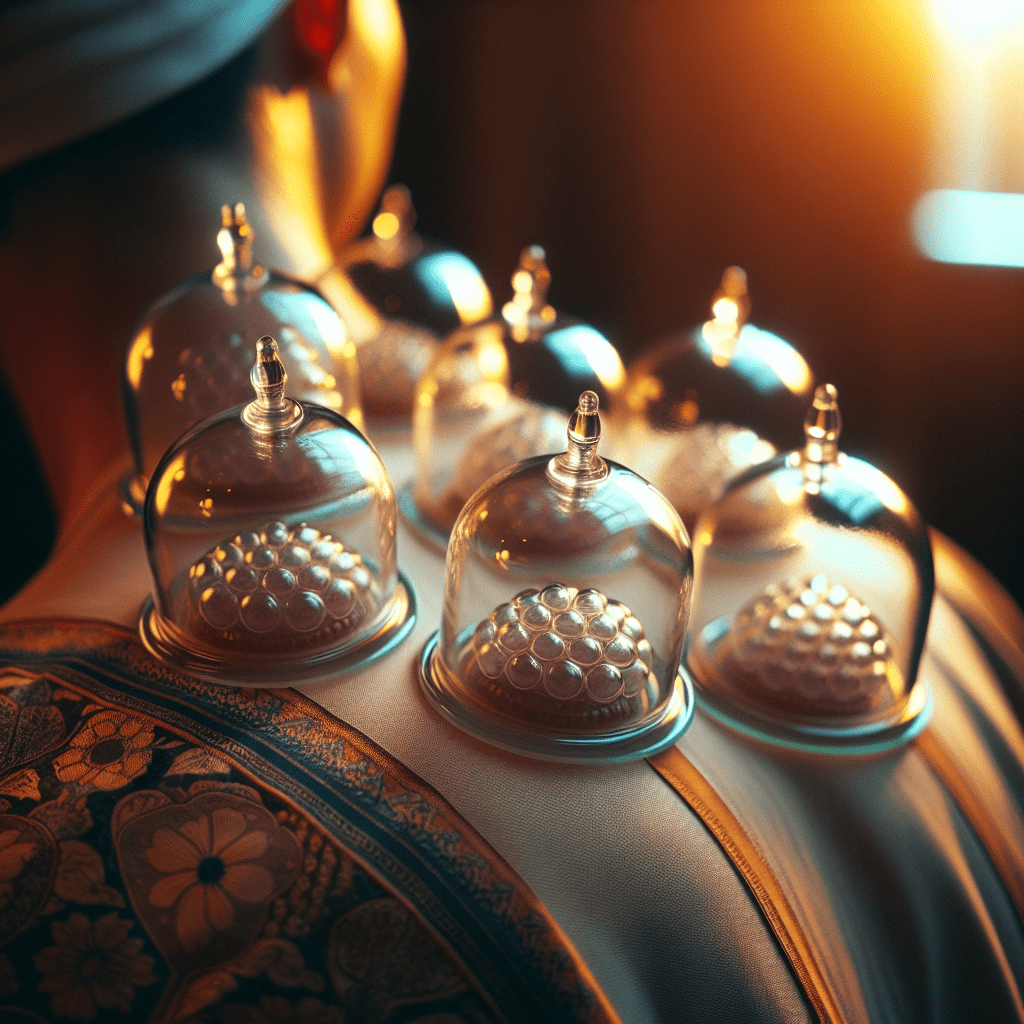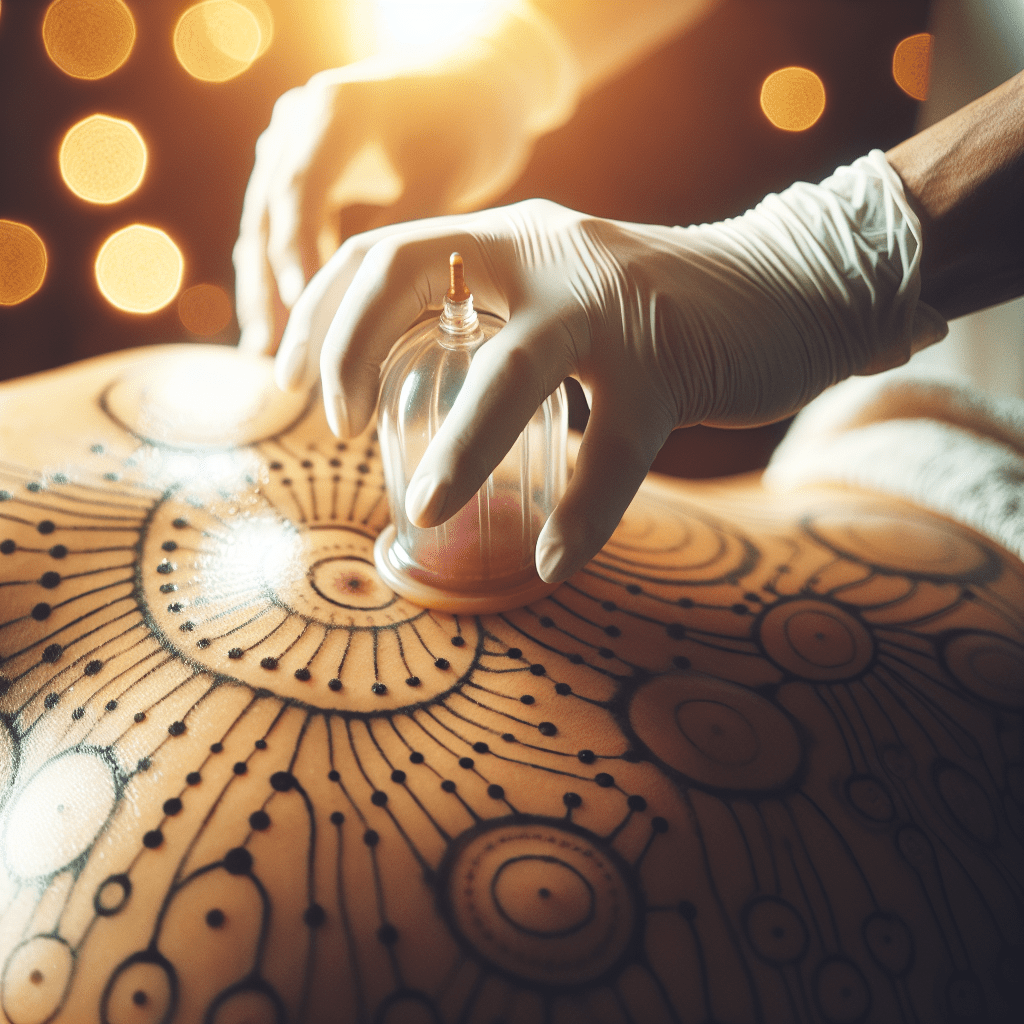In the world of sports and wellness, ancient healing practices are making a remarkable comeback. Among these time-tested therapies, cupping stands out as a method that has captivated the attention of elite athletes and health enthusiasts alike. This centuries-old technique, characterized by the distinctive circular marks it leaves behind, has been spotted on the backs and shoulders of Olympic swimmers, NBA stars, and professional gymnasts during recent international competitions.
The sight of these purple circular marks on Michael Phelps during the 2016 Olympics sparked worldwide curiosity about cupping therapy. What was this ancient practice that one of the world’s most decorated athletes was using? And why are so many top performers incorporating this Eastern healing method into their recovery routines? The answer lies in the remarkable pain relief and wellness benefits that cupping therapy offers, combining ancient wisdom with the needs of modern athletic performance.
How Cupping Therapy Works: Ancient Technique Meets Modern Application
Cupping therapy involves placing specialized cups on the skin to create suction. Traditionally, these cups were made from materials like bamboo, clay, or animal horns, though modern practitioners typically use glass, silicone, or plastic cups. The fundamental principle behind cupping therapy remains unchanged after thousands of years: creating a vacuum on targeted areas of the body to influence blood flow and energy pathways.
In traditional dry cupping, practitioners create the vacuum by briefly introducing heat into the cup, often by lighting a small flame or alcohol-soaked cotton ball. As the heat dissipates, it creates negative pressure, causing the cup to suction onto the skin. Modern techniques might use mechanical pumps to achieve the same effect. This suction gently draws the skin upward into the cup, increasing blood circulation to the area and creating a therapeutic effect.
There are two primary methods of cupping therapy that athletes and wellness seekers might encounter:
Dry Cupping: The most common form, where cups are placed on the skin and left in position for several minutes. This technique focuses primarily on increasing blood flow and releasing muscle tension without breaking the skin.
Wet Cupping (Hijama): A more advanced technique where after initial suction, small superficial incisions are made on the skin, and the cups are reapplied to draw out a small amount of blood. This method is believed to remove toxins and “stagnant blood” from the body according to traditional Eastern medicine principles.
Many modern practitioners also incorporate moving cupping, where oil is applied to the skin and the cups are gently slid across problem areas, combining the benefits of cupping with massage-like techniques for enhanced effect.
The Remarkable Benefits of Cupping Therapy
The surge in popularity of cupping therapy among athletes isn’t merely a trend—it’s based on tangible benefits that support peak physical performance and recovery. Here’s why top athletes are turning to this ancient practice:
Enhanced Blood Circulation and Oxygenation
One of the primary benefits of cupping therapy is its ability to significantly boost blood circulation. The suction created by the cups draws fresh blood to targeted areas, delivering oxygen and nutrients to muscles and tissues that may be depleted after intense training. This increased blood flow can speed up the recovery process and help prepare muscles for upcoming exertion.
A 2023 review of evidence found that cupping therapy shows promise for various musculoskeletal and sports-related conditions by improving local circulation. This enhanced blood flow doesn’t just benefit recovery—it can also help prepare the body for optimal performance when used before athletic events.
Pain Relief and Reduced Inflammation
For athletes dealing with chronic pain or the aftermath of intense training, cupping therapy offers significant relief. The suction helps release fascia (the connective tissue surrounding muscles) and breaks up adhesions that can cause pain and restrict movement. This release mechanism can provide immediate relief from muscle soreness and stiffness.
“Cupping therapy has been shown to alleviate muscle fatigue, sustain exercise capacity, enhance post-exercise recovery of autonomic activity, and improve sleep quality,” notes a recent study on athletic performance and recovery methods. These benefits make it particularly valuable for athletes in training cycles where maintaining consistent performance is crucial.
Increased Range of Motion and Flexibility
Tight muscles and restricted mobility can severely impact athletic performance and increase injury risk. Cupping therapy addresses these concerns by helping to loosen tight muscle groups and fascia. As the tissue is drawn up into the cup, rigid tissues begin to separate and relax, promoting greater flexibility and range of motion.
Pre-workout cupping sessions have become increasingly popular among athletes who need to ensure optimal mobility before competition. By releasing tension in key muscle groups, athletes can move more freely and efficiently, potentially improving performance and reducing the risk of injury during explosive movements.
Accelerated Recovery and Reduced Downtime
In competitive sports, recovery time can make the difference between success and failure. Cupping therapy’s ability to speed recovery by reducing muscle soreness and improving circulation means athletes can return to training sooner and with less discomfort. This accelerated recovery becomes especially valuable during tournament play or competitive seasons when recovery windows are limited.
Stress Reduction and Improved Sleep Quality
The physical demands of elite athleticism are matched only by the mental pressure of competition. Cupping therapy addresses both aspects by promoting relaxation and potentially improving sleep quality. The release of tension during a cupping session triggers the parasympathetic nervous system—our “rest and digest” mode—helping athletes unwind from the stress of training and competition.
Improved sleep quality is another documented benefit, with studies suggesting that cupping therapy may help regulate sleep patterns. For athletes, quality sleep is perhaps the most underrated recovery tool, making this benefit particularly significant.
Integrating Ancient Wisdom with Modern Wellness Practices
What makes cupping therapy particularly appealing in today’s wellness landscape is its seamless integration with other holistic and conventional treatments. Rather than standing alone, cupping often serves as a complementary therapy alongside other approaches:
Complementing Physical Therapy and Sports Medicine
Many sports medicine specialists now incorporate cupping therapy into comprehensive treatment plans. When used alongside conventional treatments like physical therapy, cupping can enhance outcomes by preparing tissues for manipulation or exercise. The increased blood flow from cupping can make tissues more responsive to subsequent treatments, potentially improving their effectiveness.
Pairing with Acupuncture for Enhanced Results
In traditional Eastern medicine, cupping therapy and acupuncture are often used together for synergistic effects. While acupuncture focuses on specific points along energy meridians, cupping addresses broader areas of tension and stagnation. Together, they create a comprehensive approach to pain management and wellness that many athletes find more effective than either treatment alone.
As Part of Holistic Recovery Protocols
Forward-thinking athletes and coaches have begun to develop holistic recovery protocols that incorporate various traditional and modern techniques. Cupping might be used alongside contrast therapy (alternating hot and cold treatments), massage, nutrition interventions, and meditation to create a comprehensive approach to recovery and performance enhancement.
This integration of ancient wisdom with contemporary practices represents a shift in how we approach wellness—recognizing that traditional methods often contain valuable insights that complement our modern understanding of physiology and performance.
The Science and Testimonials: What We Know About Cupping’s Effectiveness
While personal testimonials from athletes about cupping therapy are abundant and overwhelmingly positive, the scientific research is still evolving. Current studies show promising results for pain management, muscle recovery, and increased blood flow, though more research is needed to fully understand all mechanisms at work.
Olympic swimmer Michael Phelps brought international attention to cupping when he appeared with the distinctive circular marks during competition. His personal testimony speaks volumes: “I’ve done it before meets, pretty much every meet I go to,” Phelps has said about his cupping routine. “It’s the best thing ever.”
NBA stars like LeBron James and Dwyane Wade have also incorporated cupping into their recovery regimens, with training staff noting improvements in mobility and pain reduction. These high-profile endorsements, while anecdotal, carry significant weight coming from athletes whose careers depend on optimal physical function.
The scientific community continues to study cupping therapy, with recent research focusing on quantifiable outcomes like changes in blood flow, pain thresholds, and inflammatory markers. While some claims require further verification, the existing evidence suggests real physiological effects that align with the benefits reported by users.
It’s worth noting that individuals should approach cupping therapy with an informed perspective—consulting healthcare professionals, especially for those with certain conditions like bleeding disorders or skin infections where cupping may be contraindicated. When properly administered by trained practitioners, however, cupping therapy offers a low-risk addition to wellness routines with potentially significant benefits.
Eastern Wisdom Meets Modern Technology: The HerbalsZen Approach
The resurgence of ancient practices like cupping therapy reflects a broader recognition that traditional Eastern healing methods offer valuable insights for modern wellness. This philosophy of integrating time-tested wisdom with contemporary approaches is at the heart of HerbalsZen’s mission with EASTCHI AI.
Just as cupping therapy draws on 2,000-year-old principles to address modern athletic needs, EASTCHI AI leverages the ancient wisdom of Eastern medicine and combines it with cutting-edge artificial intelligence to create personalized wellness solutions. Both approaches recognize that the human body is an interconnected system where balance and energy flow are essential to optimal function.
Eastern medicine has long understood that different individuals respond uniquely to treatments based on their constitutional types—a principle reflected in how cupping therapy is applied differently depending on a person’s specific needs and condition. Similarly, EASTCHI AI analyzes users’ constitutional types through Five Element Theory to provide customized nutrition and lifestyle recommendations that align with individual needs.
The concept of “food as medicine”—central to Eastern healing traditions—complements therapies like cupping by addressing health from multiple angles. While cupping works to improve physical circulation and release tension externally, proper nutrition based on Eastern principles supports the body’s internal healing capabilities. EASTCHI AI embraces this holistic approach, providing seasonal dietary guidance that works in harmony with the body’s natural rhythms.
For those inspired by the benefits athletes are experiencing with cupping therapy, exploring other aspects of Eastern wellness approaches may offer additional advantages. The integration of these ancient practices into modern life doesn’t require choosing between traditional and contemporary approaches—rather, it’s about finding the best of both worlds.
Cupping therapy’s journey from ancient healing ritual to the recovery rooms of Olympic athletes demonstrates the enduring value of traditional wellness practices. As we continue to rediscover and scientifically validate these ancient techniques, they offer us valuable tools for addressing modern health challenges—proving that sometimes, the most innovative solutions are those that have stood the test of time.


